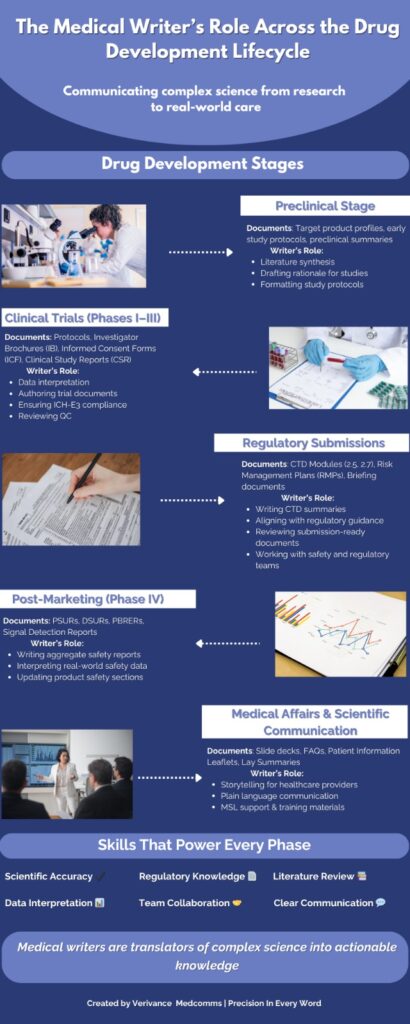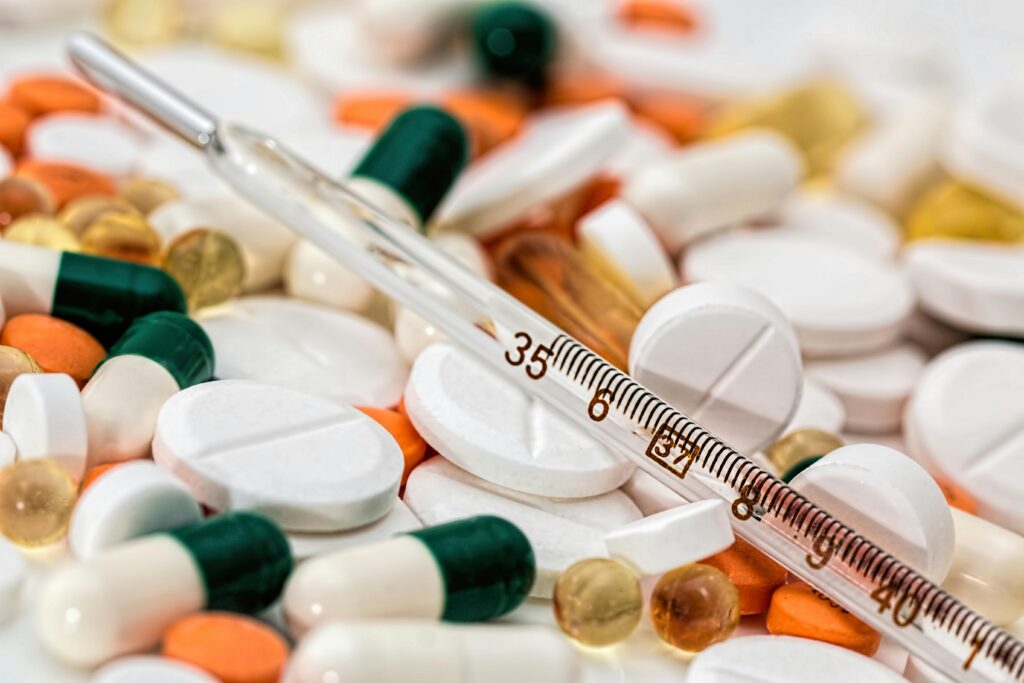The Critical Role of Medical Writers in Drug Development
Medical writers are essential contributors in the pharmaceutical and biotechnology industries. They ensure that scientific data is communicated clearly, accurately, and in compliance with regulatory requirements. Whether it’s a clinical study report or a patient information leaflet, medical writing plays a pivotal role in transforming complex science into actionable content.
In this guide, we explore how medical writers support each phase of the drug development process, the documents they create, and the skills required to succeed in this evolving field.
What Is Medical Writing in Drug Development?
Medical writing involves creating scientific documents that explain clinical and regulatory data in a way that is accurate, clear, and suitable for the target audience. These audiences include regulatory authorities, healthcare professionals, and patients.
Why Is Medical Writing Important?
Effective medical writing helps ensure that:
- Clinical trials meet ethical and regulatory standards
- Regulatory submissions are complete and compliant
- Scientific findings are clearly communicated to all stakeholders
- Patient safety data is properly documented and reported
Stages of Drug Development and the Role of Medical Writers
1. Preclinical Development
Key Documents: Target product profiles, early study protocols, preclinical summaries
Medical Writer’s Role:
- Conduct literature reviews
- Draft study rationales
- Format and edit protocols
Writers ensure early-stage research is clearly documented and strategically aligned.
2. Clinical Trials (Phases I–III)
Key Documents: Clinical protocols, investigator brochures, informed consent forms, clinical study reports (CSRs)
Medical Writer’s Role:
- Interpret clinical trial data
- Author trial-related documents
- Ensure ICH-E3 guideline compliance
- Review and manage document quality
Medical writers help secure approvals and guide clinical teams through each phase.
3. Regulatory Submissions
Key Documents: CTD Modules 2.5 and 2.7, Risk Management Plans (RMPs), briefing documents
Medical Writer’s Role:
- Prepare regulatory summaries
- Align content with FDA, EMA, and ICH guidelines
- Collaborate with safety and regulatory teams
- Finalize submission-ready materials
Their expertise increases the likelihood of successful drug approval.
4. Post-Marketing Surveillance (Phase IV)
Key Documents: PSURs (Periodic Safety Update Reports), DSURs (Development Safety Update Reports), signal detection reports
Medical Writer’s Role:
- Write aggregate safety reports
- Analyze real-world safety data
- Update product safety sections
Ongoing safety documentation is essential for regulatory compliance and patient care.
5. Scientific Communication and Medical Affairs
Key Documents: Slide decks, patient information leaflets, lay summaries, FAQs
Medical Writer’s Role:
- Translate complex data into plain language
- Support MSLs and field teams
- Create engaging, accurate educational materials
Medical writers are key to effective scientific communication across clinical and commercial settings.
Key Skills for Medical Writers in Pharma
Medical writers must possess a diverse skill set, including:
- In-depth scientific and therapeutic area knowledge
- Familiarity with regulatory frameworks (FDA, EMA, ICH)
- Literature search and data analysis proficiency
- Excellent writing, editing, and formatting skills
- Strong collaboration and project management abilities
Free Infographic: Medical Writing Across the Drug Development Lifecycle
To help visualize the impact of medical writing, we’ve created a free infographic that outlines:
- What documents are required at each phase
- How medical writers contribute at every step
- The skills that enable effective communication and compliance
Download your free infographic here

This resource is ideal for medical writers, regulatory affairs professionals, clinical researchers, and pharma executives looking to streamline their document strategy.


